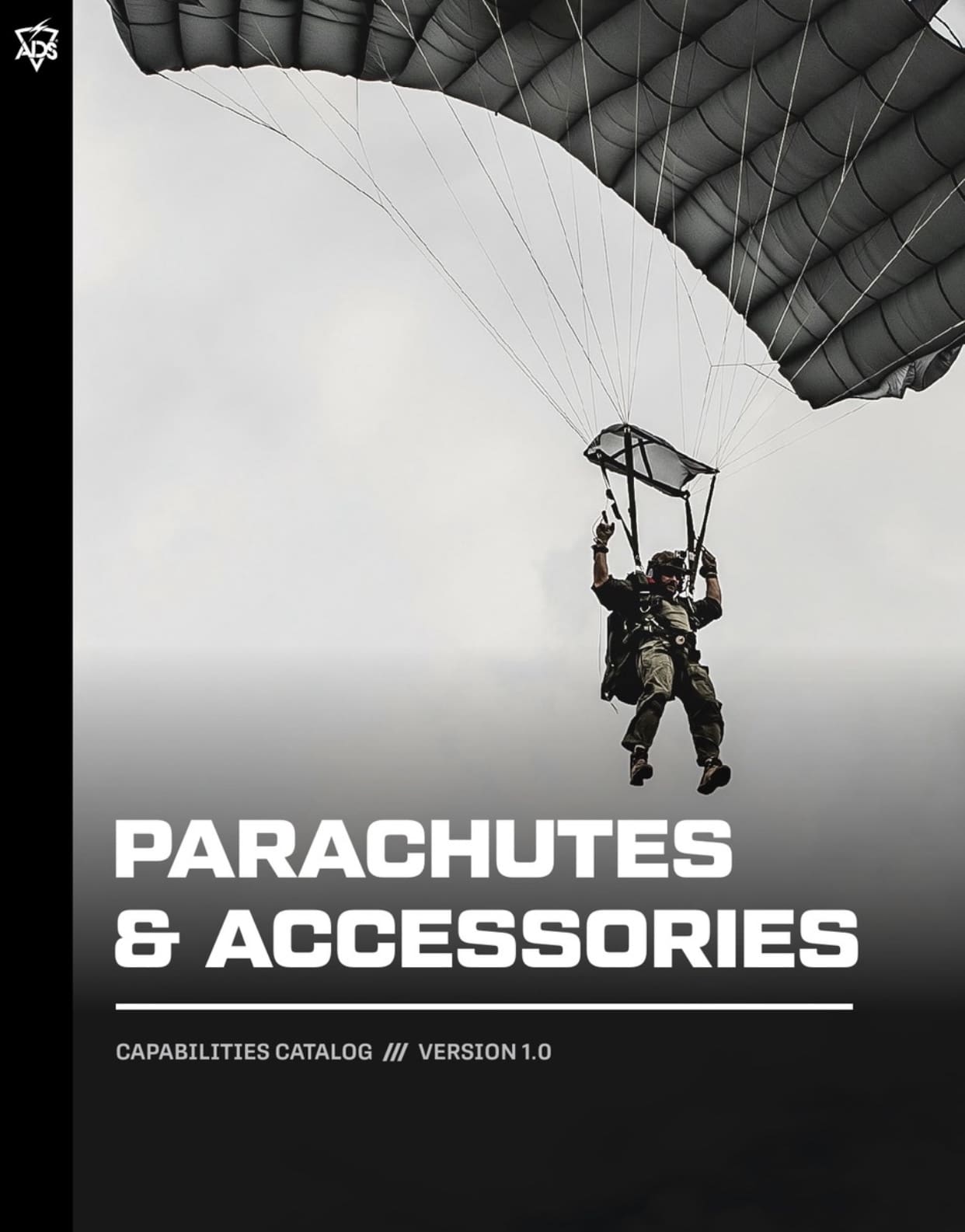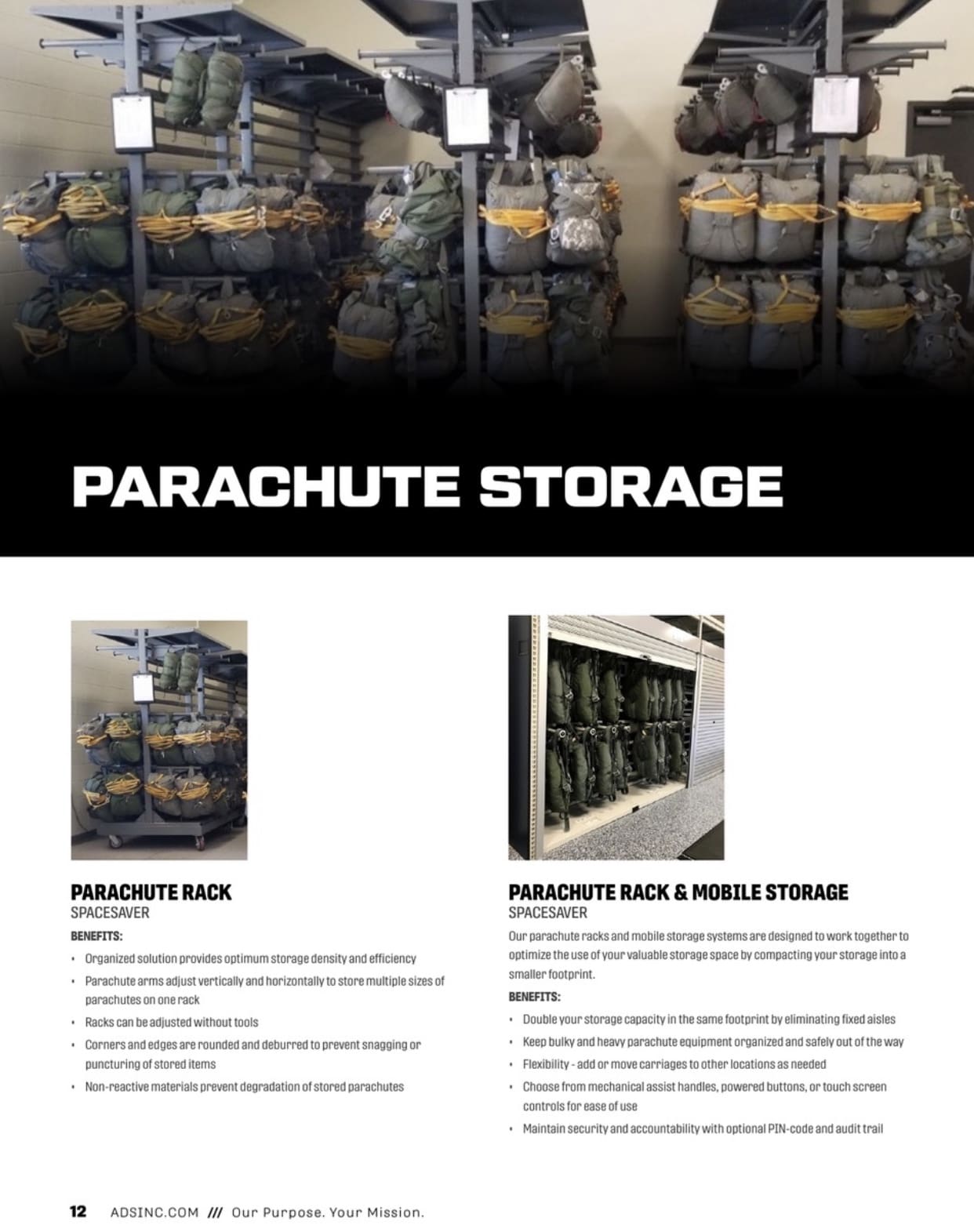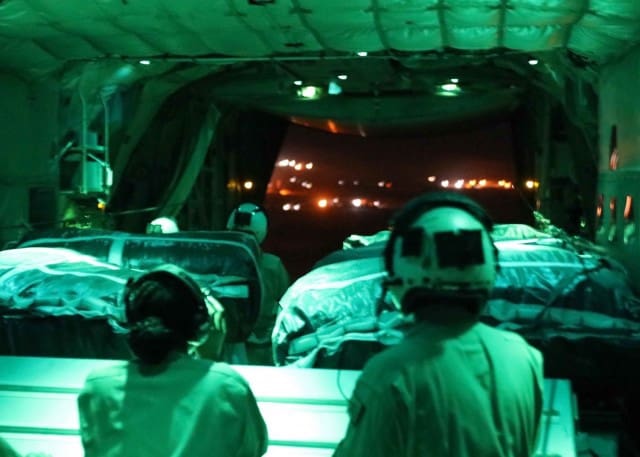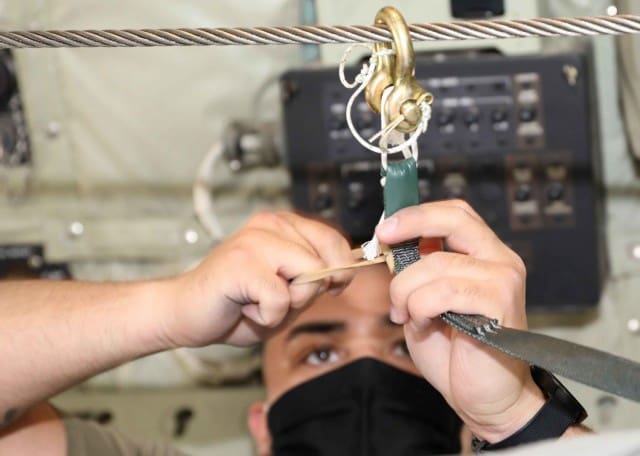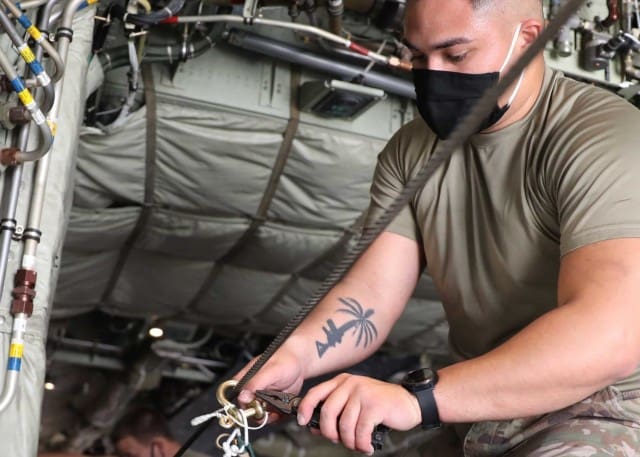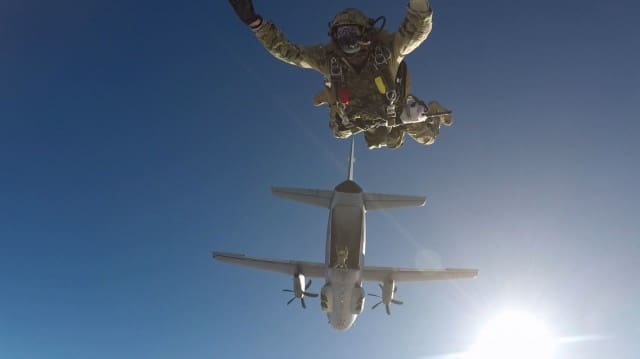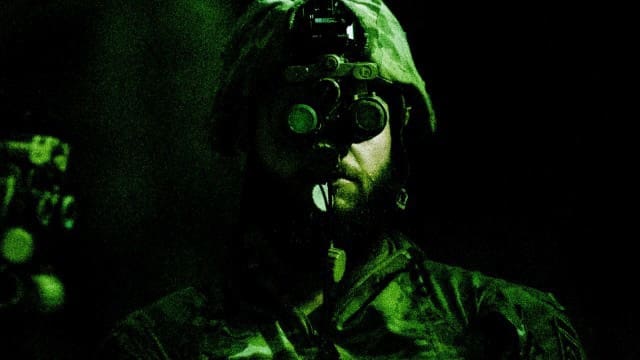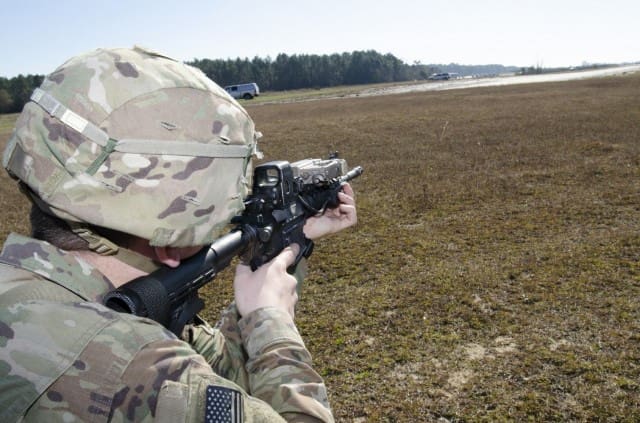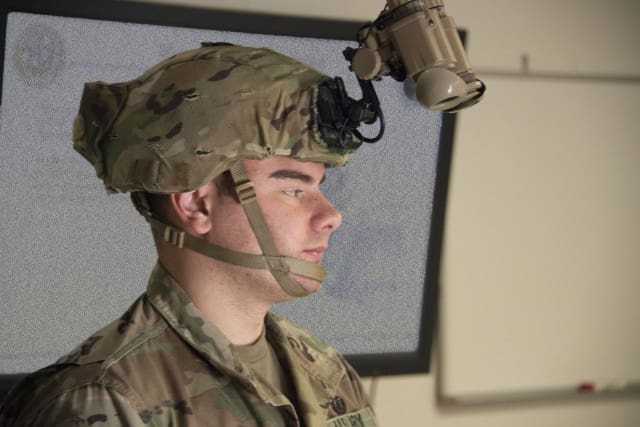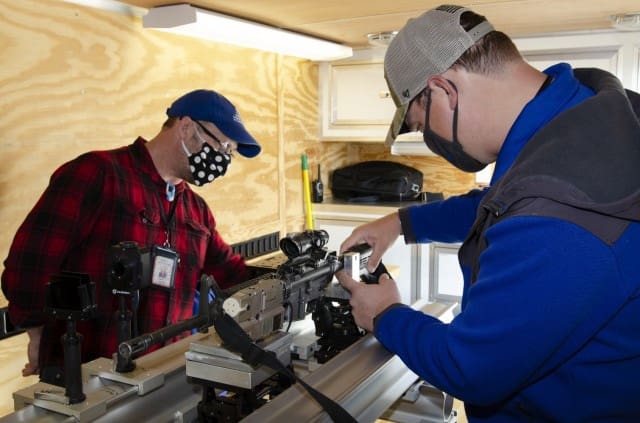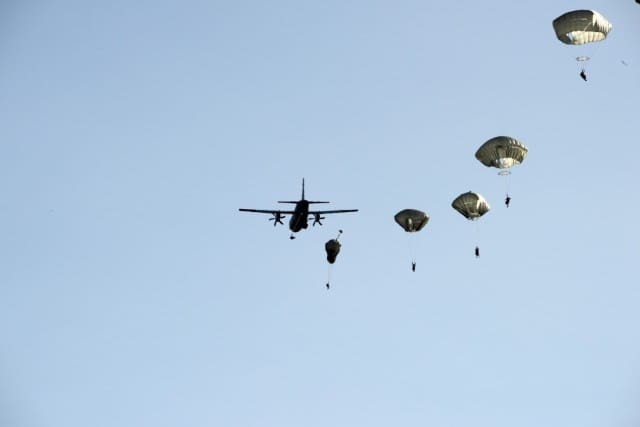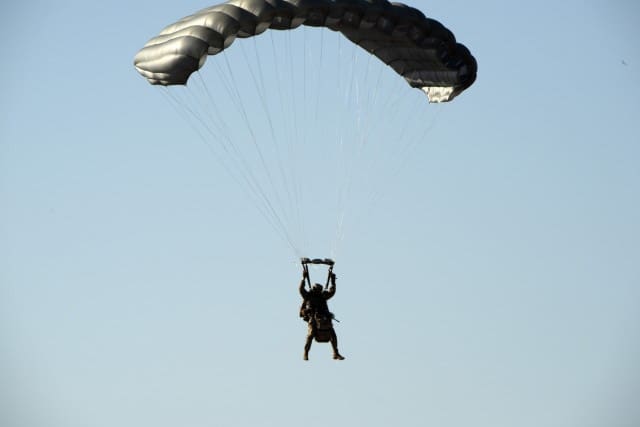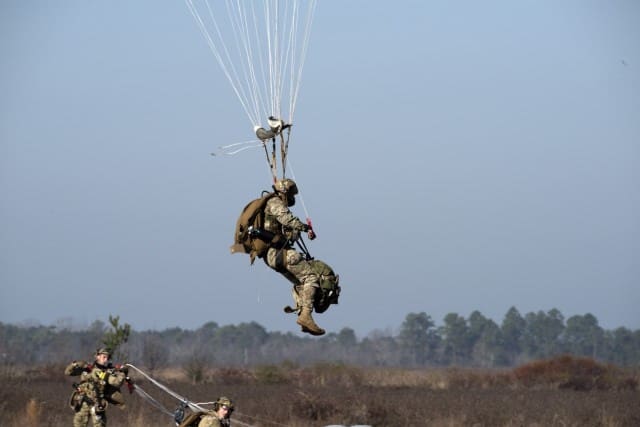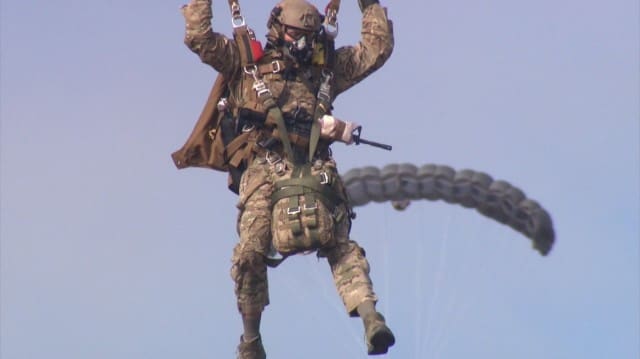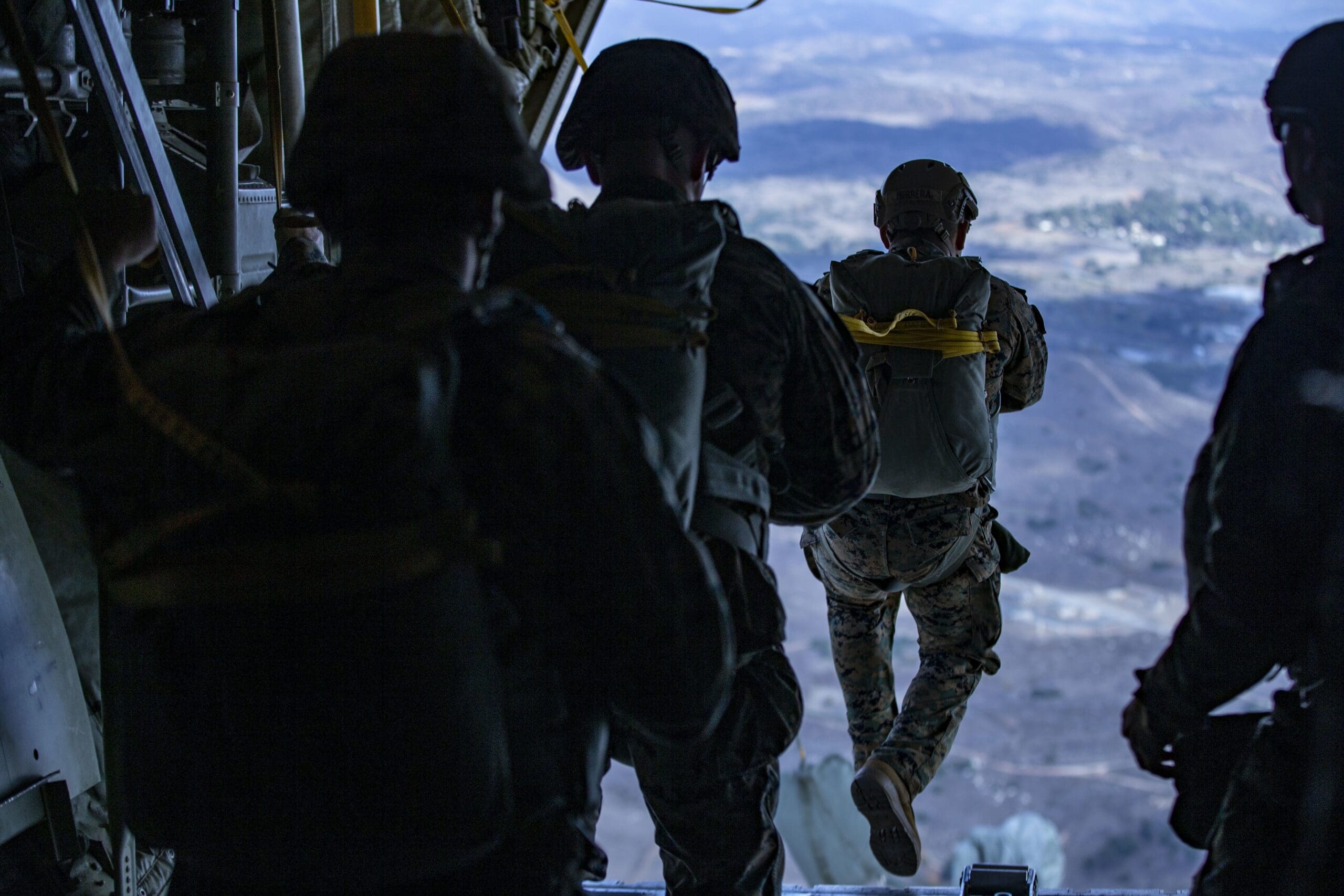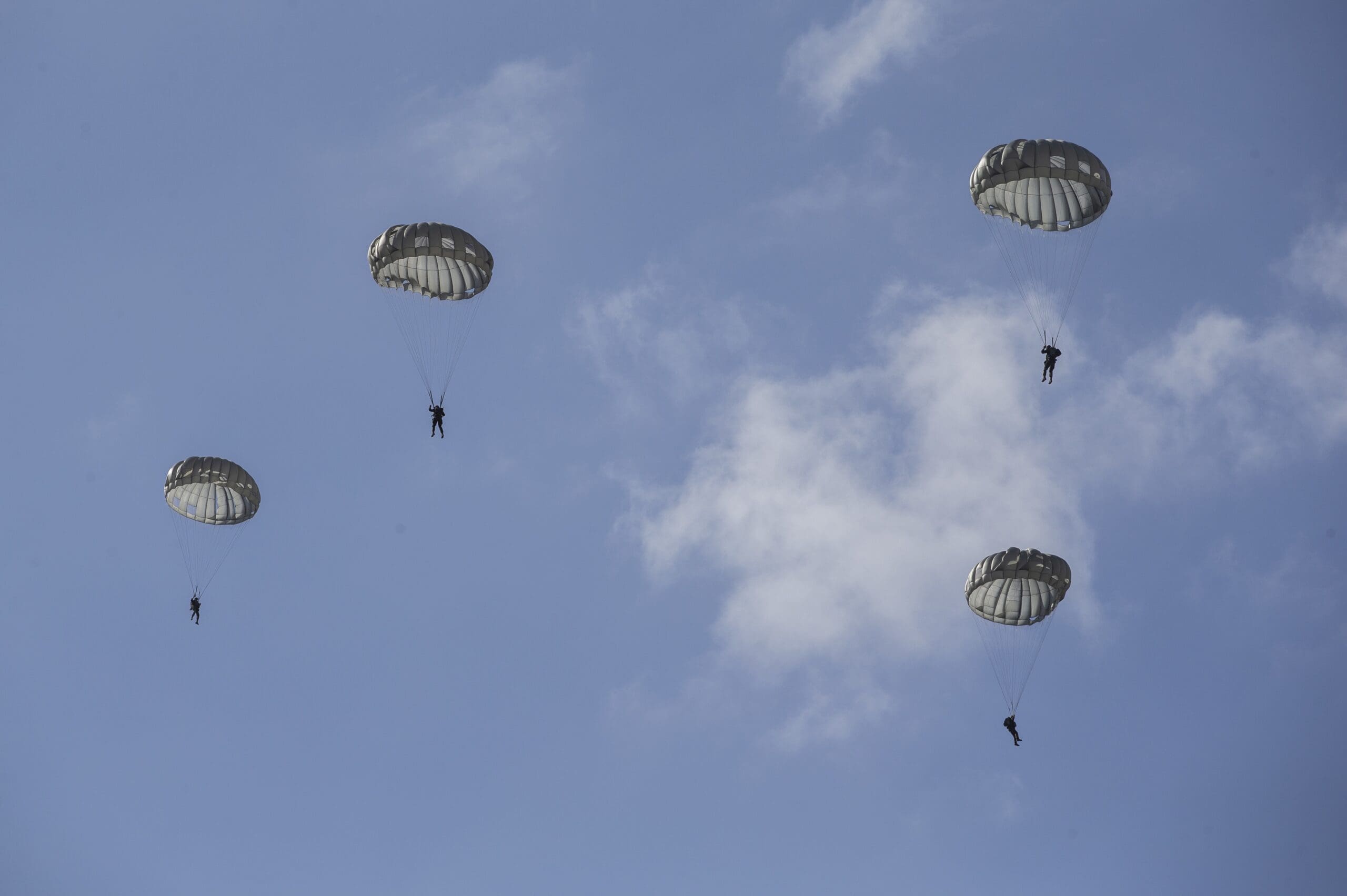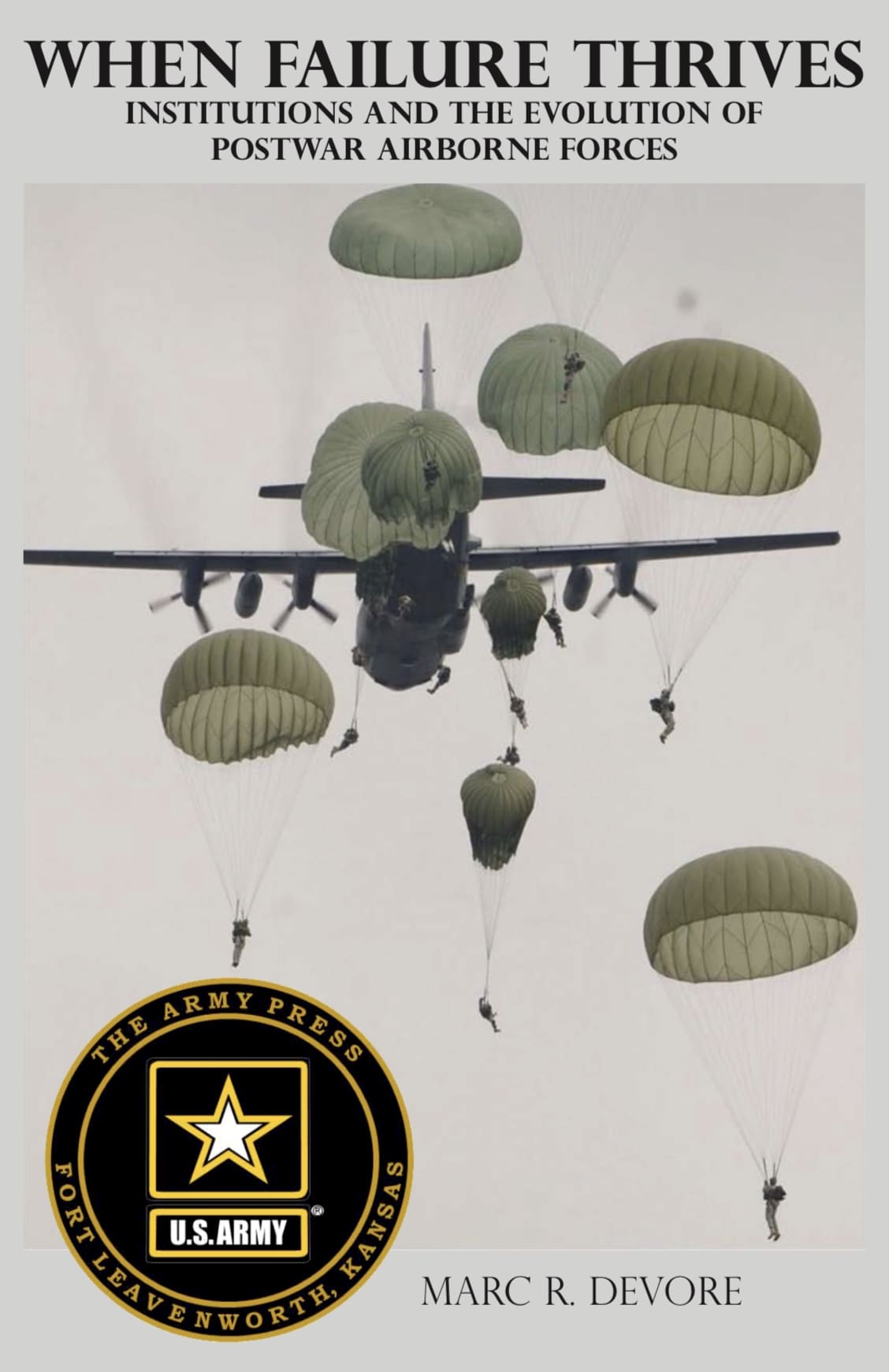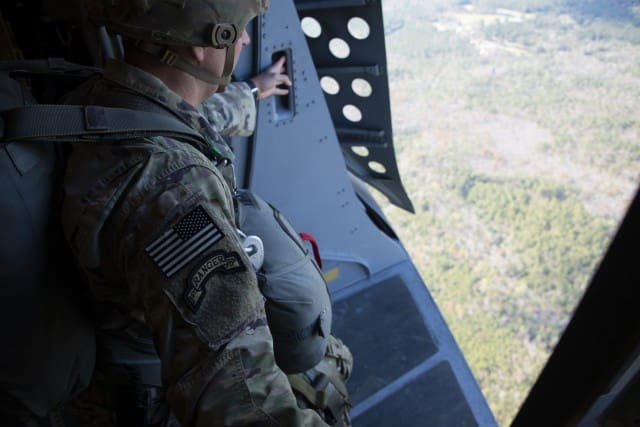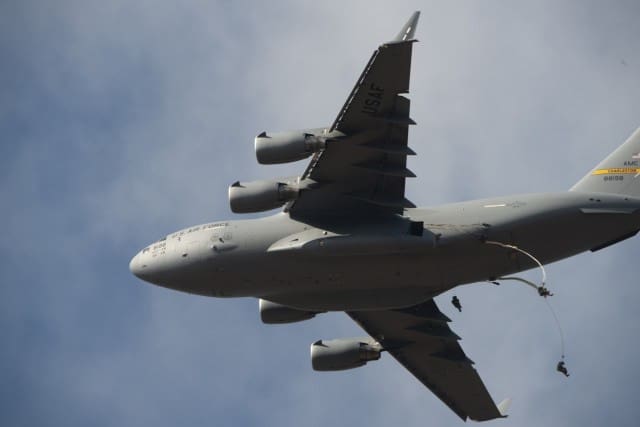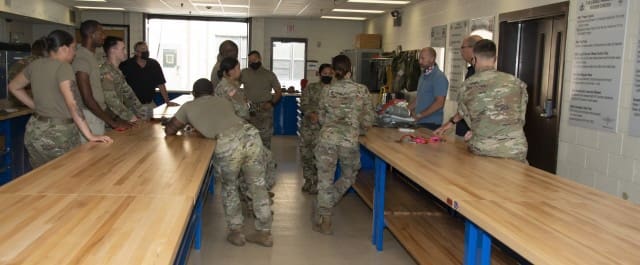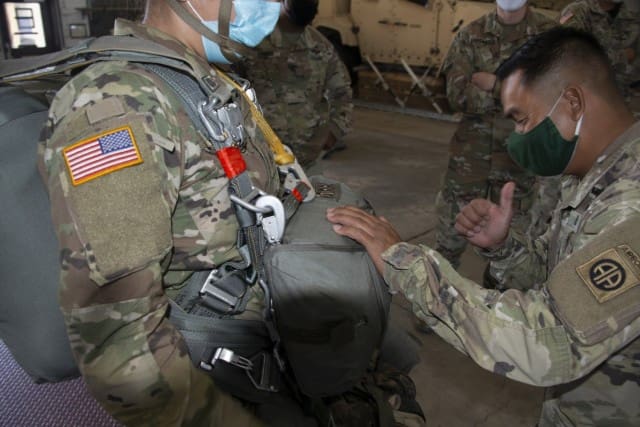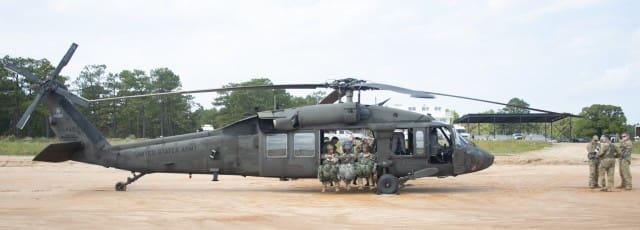FORT GREELY, Alaska — Paratroopers with 4th Infantry Brigade Combat Team (Airborne), 25th Infantry Division, conducted an airborne operation May 11, 2021, onto Allen Army Airfield, Fort Greely, Alaska, as part of Northern Edge 2021.
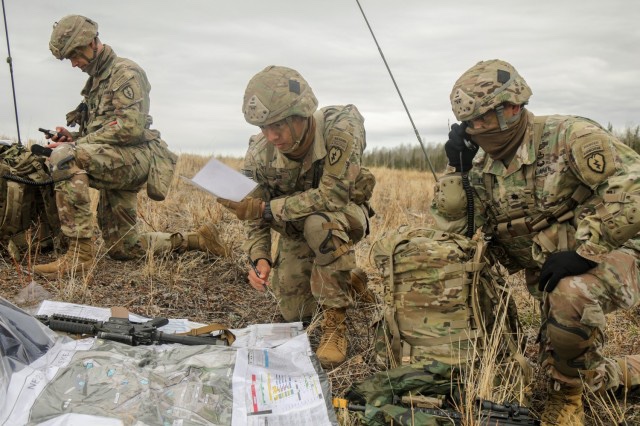
Following the seizure of the airfield, an M142 High Mobility Artillery Rocket System (HIMARS) battery from the 17th Field Artillery Brigade out of Joint Base Lewis-McChord arrived and conducted a live fire exercise at nearby Donnelly Training Area.
Approximately 300 paratroopers from the 1st Battalion, 501st Parachute Infantry Regiment, out of Joint Base Elmendorf-Richardson, Alaska, exited from U.S. Air Force C-17 Globemaster III and C-130 Hercules aircraft while A-10 Thunderbolt IIs orbited, providing close air support. Once on the ground, paratroopers moved to their assembly areas to consolidate and secure the airfield as additional C-130s and C-17s landed with more paratroopers, equipment and the HIMARS battery.
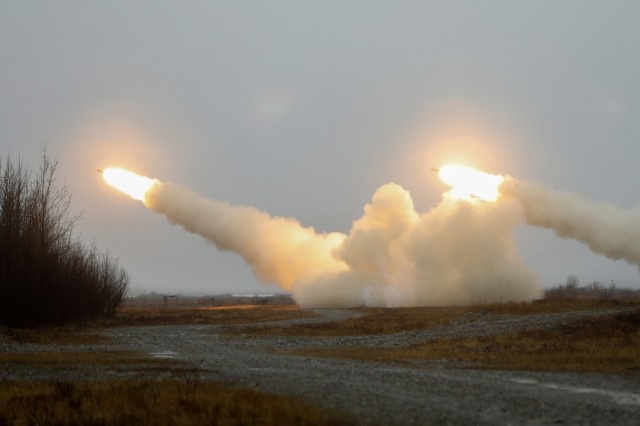
The HIMARS battery with 5th Battalion, 3rd Field Artillery Regiment, was air transported from Cold Bay, Alaska, and fired a full volley of rockets that demonstrated the ability of the joint force to quickly build and implement combat power.
Conducting a JFEO as part of a joint operation is nothing new to the Spartan paratroopers who train for operations like this all year long.
“We’ve been doing this for a long time, and each paratrooper knows their role,” said Maj. Michael Conforti, the operations officer for 1-501st PIR. “You never know if an aircraft will have a mechanical issue, or someone will get injured, so the key to success is that each paratrooper also knows the jobs and duties of everyone else around them.”
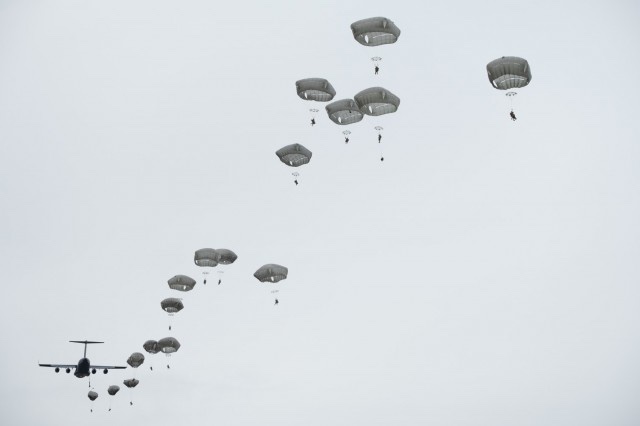
Understanding the role of adjacent units and enhancing the ability to work together are key components of exercise NE21.
NE21 is a U.S. Indo-Pacific Command sponsored, Headquarters Pacific Air Forces led U.S. joint field training exercise scheduled for May 3-14, 2021, in locations in and around Alaska that uses realistic scenarios to improve joint combat readiness.
The Spartan Brigade is the only airborne infantry brigade combat team in the Indo-Pacific Command and provides the combatant commander with the unique capability to project an expeditionary force by air across Pacific and Arctic regions.
By MAJ Jason Welch


